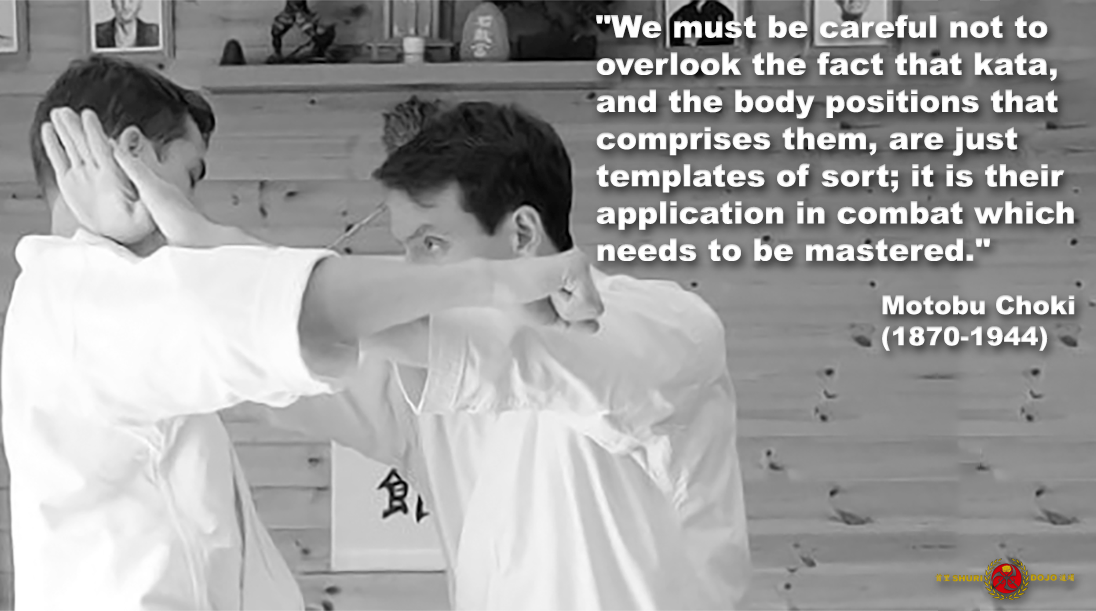
When you analyze kata, breakdown the movements within, your bunkai needs to be effective, it must be applicable to real situations. The kata were created for this reason.
.
Some of the applications put forward as interpretations of kata movement vary from the wonderful to the ridiculous, and unfortunately it is often hopelessly inadequate.
.
Of course, not all practitioners of karate are interested in the practical side of the martial arts. However, if your bunkai is to be realistic, then you have to work to the same premise as the masters who created the kata in the first place.
.
In order to understand kata, training must be realistic and not based on modern competitive rules. But unfortunately the nature of training has changed. Training was never intended to be geared towards gaining a belt, competition, or tournament results, but on understanding, effectiveness and development. As an example, the movements contained within kata were never meant to receive an attack from another martial artist, and this is perhaps one reason why many interpretations of applications are woefully ineffective.
.
Originally kata was the foundation of training, it developed the fundamental techniques and concepts, and acted as the main stimulus for training. If you consider systems which do not have kata in their syllabus, you can still learn and develop a range of combat skills without it. But kata is more than the sum of its parts. It encourages you to reflect and analyze the movement you practice and to fit them into a much broader concept. Kata should promote thinking and analysis and in doing so develop deeper understanding.
.
Within the application of kata we find the depth and subtleties that, for me at least, makes the art of karate so fascinating and rewarding.
.
Many practitioners and instructors, devalue kata and its applications as being irrelevant. This is because many people struggle to see variety and options, primarily based upon their own limited knowledge.
.
If you take a single movement there is a near limitless number of ways you can adapt, vary and explore that movement. The problem being is that most practitioners only see the end of a technique, and the label put upon it. The kata make no attempt to give you it all; it merely sets you up with a few examples, a template. It is then up to you to explore the rest for yourself based upon the principles set within the kata you are studying.
.
Bunkai is flexible and should work to help your develop your karate. The study of kata and effective bunkai ,should act as the vehicle for you to develop a deeper understanding of your karate, through reflection and through the stimulus it provides. It is not there just to provide a spectacle and gain another belt. ![]()
![]()
.
“We must be careful not to overlook the fact that kata, and the body positions that comprises them, are just templates of sort; it is their application in combat which needs to be mastered.” – Motobu Choki (1870-1944)
.
.
![]() Photo Credit: With thanks to Chris Denwood
Photo Credit: With thanks to Chris Denwood
.
.
